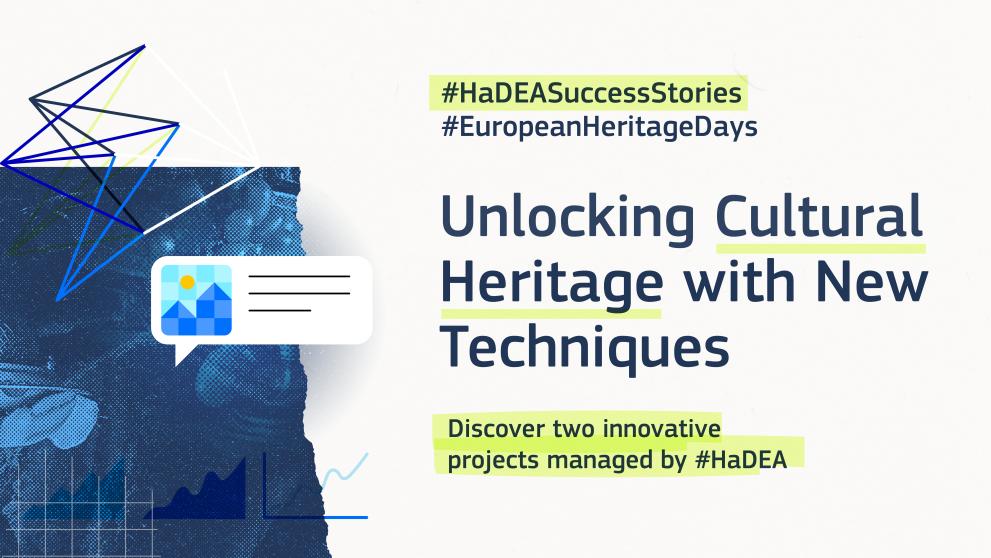
September is the month of the European Heritage Days. The main aim of this initiative is to raise awareness about the richness and cultural diversity of Europe and, in turn, to highlight local traditions, architecture and artwork through the organisation of a wide range of events across Europe.
HaDEA has been contributing to the development of digitisation of cultural heritage through CEF-Telecom (2014-2020) and Digital Europe Programme (2021-2027).
HaDEA Success Stories
Discover two funded projects and their contribution to preserving tangible and intangible cultural heritage:
- Saint George on a Bike improved the quality and quantity of open metadata associated with European Cultural Heritage (CH) imagery, and provided a high-performance metadata enrichment capability for the European Data Infrastructure (EUDAT). The service focuses on images and their detailed descriptions (object labels, visual descriptions…), language models, semantic information, and cultural heritage specific heuristics to enable a better understanding of artwork content and their historical context.
- EnrichEuropeana+ (‘Enriching Europeana through citizen science and artificial intelligence - unlocking the 19th century' 2021-2022) has further enhanced the Transcribathon Platform as a service for cultural heritage institutions and public users. The project created new tools based on innovative artificial intelligence (AI) solutions to automate transcription and enrichment activities. It developed and integrated services based on Handwritten Text Recognition technology to support and reduce the effort of manuscript transcription. It used natural language processing and big data technology to analyse transcriptions and their translations, providing support for semantic metadata enrichment, clustering, and classification. The project organised a crowdsourcing campaign to engage the public and enrich the description of manuscripts related to historical events and societal transformations in Europe in the 19th century.
Background
The first generation of the Connecting Europe Facility ‘Telecom’ (2014-2020) facilitated the cross-border interaction between public administrations, businesses and citizens, by deploying Digital Service Infrastructures (DSI) and broadband networks.
The CEF support to digital technologies is being continued and further developed in the next multiannual financial framework (2021-2027) under the Digital Europe Programme.
The role of technology in cultural heritage has been steadily increasing and become key as regards the preservation and safeguard of cultural material. Since the Commission issued the Recommendation on digitisation and online accessibility and digital preservation of cultural material (2011/711/EU), funding have been allocated to Member States, Cultural Heritage institutions, associations, and private sector for doubling down on the multi-disciplinary digital component in cultural preservation.
Details
- Publication date
- 25 September 2023
- Author
- European Health and Digital Executive Agency
- Programme Sector
- Digital
- Programme
- Connecting Europe Facility 1
- Digital Europe Programme
- Tags
- Digital technology
- Digital transformation
- EUFunded
